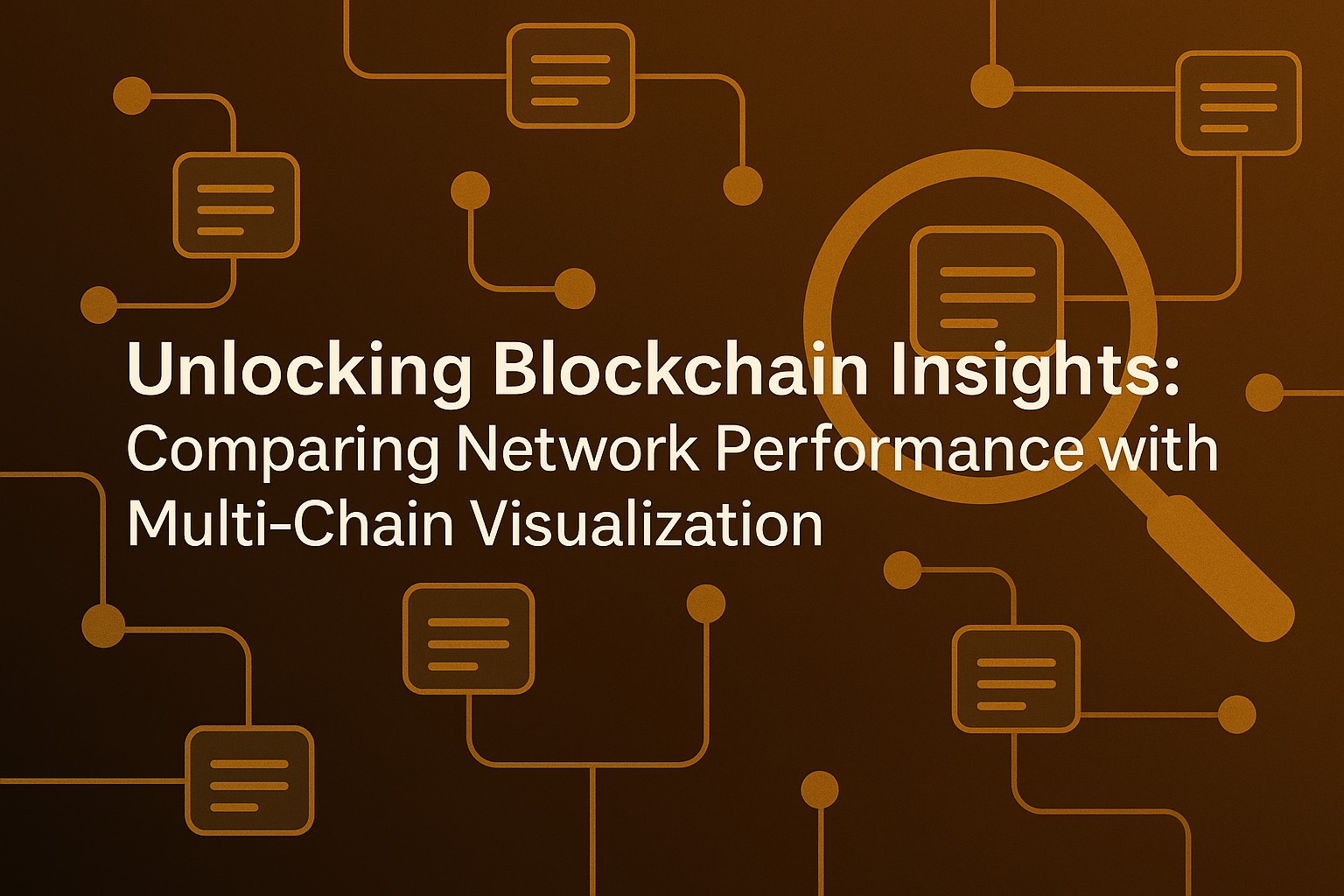Blockchain has grown far beyond Bitcoin. Today, hundreds of blockchains run side by side, from Ethereum to Solana to Avalanche. Each one has its own speed, fees, and user experience. But here’s the challenge: how do you compare them fairly? That’s where multi-chain visualization comes in.
Think of it like comparing cities. One city has fast highways but constant tolls. Another has free roads but lots of traffic. If you were moving, you’d want a clear map to help you decide. Blockchain is the same. Multi-chain visualization gives us that map, it takes complex, raw blockchain data and turns it into simple visuals that show how networks perform.
This article explains what multi-chain visualization is, how it works, and why it’s becoming a vital tool for developers, investors, and anyone curious about blockchain. We’ll explore network performance, real-world examples, benefits, challenges, and future trends.
For context, you can see how Hindsight explains blockchain clarity in Blockchain Analytics Made Simple and Hindsight’s Approach to Blockchain Visualization. Both show how visuals transform blockchain complexity into easy-to-read patterns.
Understanding Multi-Chain Visualization
Before we dive into comparisons, let’s define what multi-chain visualization means.
Definition and Purpose
Multi-chain visualization is the practice of showing blockchain activity across several networks in one place. Instead of flipping between explorers like Etherscan or Solscan, you get a dashboard that shows:
- Transaction flows across multiple chains
- Performance metrics like speed, cost, and volume
- Cross-chain activity like bridging and swaps
How It Differs from Single-Chain Analytics
Single-chain tools show what’s happening in one ecosystem. Multi-chain visualization connects the dots, so you can:
- Spot trends across chains
- Compare performance side by side
- Identify which networks are growing or struggling
This bigger picture helps developers design better apps, investors make smarter decisions, and users choose the right platforms.
Why Visualization Matters
Raw blockchain data is like a foreign language. Visualization translates it into a picture anyone can understand. Shapes, colors, and flows highlight what matters most, whether it’s speed, safety, or scalability.
Comparing Network Performance Across Chains
Different blockchains offer different trade-offs. Some focus on speed, others on decentralization, and some on low fees. Visualization makes these differences clear.
Key Metrics to Compare
- Speed (latency): How quickly transactions are confirmed
- Throughput (TPS): How many transactions per second the network can handle
- Scalability: How performance holds up under heavy use
- Cost: Average transaction fees
- Reliability: Uptime and failure rates
Real-World Comparisons
- Ethereum vs. Solana: Ethereum is secure but slower and more expensive. Solana is faster and cheaper, but has faced outages.
- Avalanche vs. Polygon: Avalanche supports subnets for scaling, while Polygon offers sidechains that reduce congestion on Ethereum.
- Cross-chain DeFi: Comparing how lending platforms perform across chains shows where users get the best speed and value.
Visualization tools present these differences with charts, maps, and flows that make side-by-side analysis simple.
Benefits of Multi-Chain Visualization
So why is this useful? Here are the biggest advantages:
- Clearer Decisions: Developers see which chains perform best for their apps. Investors can compare where activity is strongest.
- Spotting Bottlenecks: Visualization shows when a chain slows down or becomes too costly.
- Cross-Chain Insights: See how tokens, NFTs, or liquidity move between ecosystems.
- Boosting Trust: Transparent data builds confidence for users and regulators.
As Deloitte notes, blockchain adoption grows when businesses have clear, reliable data (source). Visualization is how that clarity is delivered.
Case Studies
Example 1: Ethereum vs. Solana Flows
A visualization tool showed that during a spike in NFT trading, Ethereum fees rose sharply, while Solana processed more trades at lower cost. The visual made it easy for marketplaces to adjust strategies.
Example 2: DeFi Across Chains
A DeFi dashboard visualized lending and borrowing across Ethereum, Avalanche, and Polygon. Users saw where liquidity was deepest, helping them choose platforms with less risk.
Example 3: NFT Ecosystems
NFT creators compared marketplaces across chains, using visuals to see which networks supported higher resale volumes and faster royalty payouts.
These examples show that visuals don’t just simplify data, they change decisions in real time.
Tools and Frameworks
Several platforms now support multi-chain visualization. Each has its strengths:
- Hindsight VIP Visual Explorer – Simplifies complex activity into clear shapes and flows.
- Nansen – Labels wallets and provides investor insights.
- Chainalysis – Offers compliance-focused monitoring.
- Dune Analytics – Custom dashboards for multi-chain data.
The best tools combine real-time monitoring with user-friendly design, giving professionals and beginners alike the ability to “see” the blockchain.
Challenges and Limitations
Multi-chain visualization is powerful, but it has hurdles:
- Data Overload: Billions of transactions can overwhelm dashboards.
- Cross-Chain Compatibility: Not all chains share the same standards, making integration tricky.
- Risk of Misinterpretation: Simple visuals may hide complex risks.
- Scalability: Tools must handle growth without slowing down.
Visualization should always be combined with audits, education, and context to avoid blind spots.
Future Outlook
The future of multi-chain visualization looks promising.
Trends to Watch
- AI-Driven Insights: Predicting congestion and risks before they happen.
- Cross-Chain Bridges: Visualizing safe movement of assets across chains.
- Enterprise Adoption: Companies using visuals for compliance and reporting.
- Regulation: Governments may require visualization tools for oversight.
CoinDesk notes that tools which simplify blockchain literacy will be key to mainstream adoption (source).
Conclusion: Why Multi-Chain Visualization Matters
As blockchain grows, so does its complexity. Without a map, comparing performance across chains feels impossible. Multi-chain visualization makes it simple. It turns raw numbers into visuals that highlight speed, safety, and scalability.
From developers to investors to regulators, everyone benefits when blockchain is easy to understand. Visualization unlocks blockchain insights that build trust, improve decisions, and prepare the ecosystem for the future.
